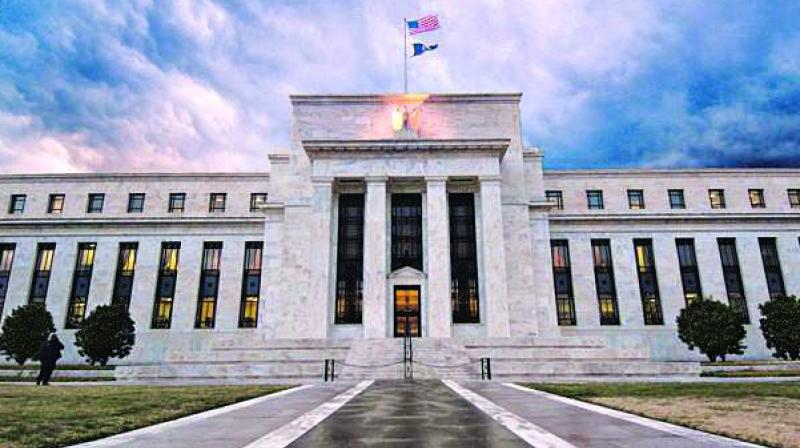Fed was against notion of pre-set path to rate cuts

Washington: Federal Reserve policymakers were deeply divided over whether to cut interest rates last month but were united in wanting to signal they were not on a preset path to more cuts, a message not likely to sit well with US President Donald Trump.
Minutes from the two-day meeting released on Wednesday showed policymakers' ultimate decision to lower the central bank's benchmark interest rate by a quarter percentage point drew more opposition than was reflected in the rate-setting panel's 8-2 vote, announced after the meeting adjourned on July 31.
While a "couple" of participants favoured a deeper cut of half a percentage point to help lift inflation toward the Fed's target and thwart fallout from global trade tensions, a larger number — characterized in the minutes as "several" — favoured no change at all.
The depth of the debate raises the stakes for the signal that Chairman Jerome Powell is set to deliver on Friday at the Fed's annual policy retreat in Jackson Hole, Wyoming. It also shows a Federal Reserve not eager to give Trump the larger rate reductions he is demanding.
"I think the thing that surprised me was how divided they were," said Mary Ann Hurley, Vice President for fixed income trading at DA Davidson in Seattle. "We're really in uncharted territory. They are really concerned about doing or not doing the right thing."
The divisions revealed in the minutes indicate there might have been more dissents if all participants had a vote. While Fed board governors are permanent voters, only five of the 12 regional reserve bank presidents have a vote at each meeting.
At the same time, the minutes also showed broad concern among policymakers over a global economic slowdown, trade tensions and sluggish inflation.
Since that meeting, the Fed has come under increasing pressure to cut borrowing costs more, including a call by Trump on Wednesday for the Fed to slash its benchmark rate.
However, Fed policymakers agreed at their July 30-31 meeting that they did not want to give the impression they were planning more rate cuts.
"Participants generally favoured an approach in which policy would be guided by incoming information... and that avoided any appearance of following a preset course," according to the minutes.
US stocks held on to session gains after the minutes were released, with the benchmark S&P 500 Index. SPX up about 0.77 per cent on the day.
"The Fed clearly wants to be flexible. They are clearly worried about some of the global tensions that are out there, whether it is trade or Brexit or some of those international developments," said Willie Delwiche, Investment Strategist at Baird in Milwaukee.
Yields on longer-dated US Treasury securities rose after the minutes were published. The 10-year note yield climbed to 1.58 per cent, while the 30-year bond rose further above the key 2 per cent level, last trading at 2.06 per cent. It fell below 2 per cent for the first time ever last week as diminishing expectations for US economic growth fueled demand for safe assets.
The dollar strengthened against the safe-have yen and Swiss franc.
The comments by Trump, who has repeatedly criticized the Federal Reserve's policies, come as he seeks to downplay worries that a trade war between the US and China could weigh on the US economy and trigger a possible recession before the November 2020 presidential election.
Minneapolis Federal Reserve Bank President Neel Kashkari, who does not have a vote on the Fed's monetary policy committee this year but participates in policy discussions, urged the Fed on Wednesday to use pledges about future policy, known in central banking as "forward guidance," to boost the economy.
The July 30-31 policy meeting also included discussion of the Fed's research into potential changes to its approach to setting policy. A number of policymakers said the Fed could have been more aggressive in using bond purchases to fight the 2007-09 recession.

